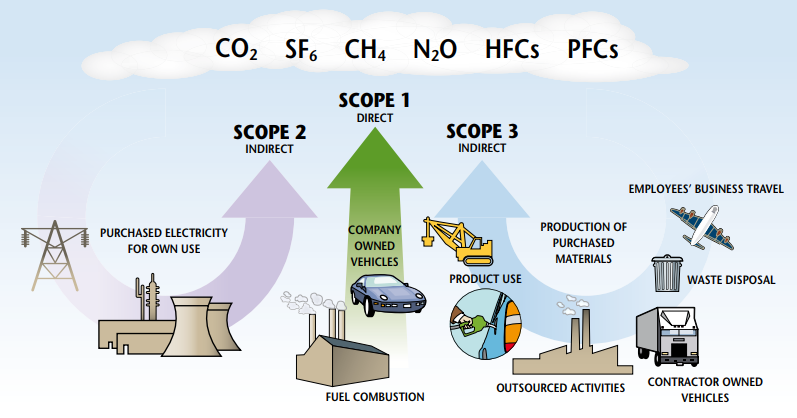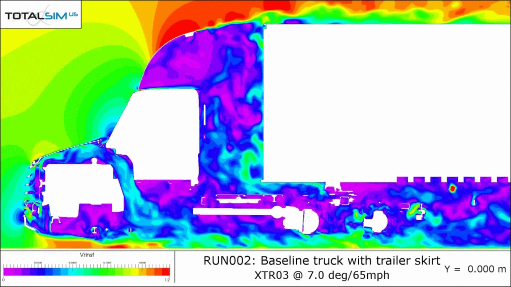What Fleet Owners Need to Know about ESG Reporting
The SEC’s new climate disclosure rule, proposed in March 2022, has paved the way for the broadest federally mandated corporate ESG data disclosure requirement ever. The rule would require public companies to provide certain climate-related financial data, and greenhouse gas emissions insights, in public disclosure filings. That has put pressure on a host of industries, including transportation, to seek faster ways to reduce emissions as investors, shippers and consumers demand more ESG reporting and greater sustainability measures.
Pressure Mounts to Lower Emissions, Report Results
Companies have stepped up their Environmental, Social and Governance (ESG) reporting, or sustainability reporting, as global climate change measures have increased the demand for industries to lower greenhouse gas (GHG) emissions.
Companies deemed more socially responsible are now far more appealing to investors and consumers. In response to the global cry for serious climate change response, more than 300 businesses have taken the Climate Pledge, including those in the transportation industry, to achieve net-zero carbon emissions by 2040 across its operations. That’s a decade ahead of the Paris Agreement, which requires countries to reduce emissions by 45 percent by 2030 and reach net zero by 2050.
In the United States, the transportation industry stands as one of the leading contributors of air pollution. Carbon dioxide (CO2) creates the vast majority of GHG emissions and major sources of CO2 include fossil fuel combustion. In fact, although freight trucks make up only 10 percent of the vehicles on the road, they produce 25 percent of all greenhouse gas emissions.
Now trucking fleet operators are feeling the pressure to produce ESG reports, especially data around emissions, and work more quickly to lower emissions and reduce their carbon footprint.
So, What is ESG Reporting Again?
ESG impacts represent a fairly broad umbrella of activities, and fleet operators are already doing many things that qualify, including using alternative fuels, running newer, lower-emission trucks, using products and technology solutions that create better freight efficiency, and even using energy-saving and recycling efforts at trucking facilities.
Trucking companies also are monitoring their social impact, which takes into account people and culture. Employee engagement initiatives and better standards for drivers fall into this category, along with monitoring labor standards among suppliers, data protection and privacy, and gender and diversity.
Good governance practices ensure transparency in operations and cover the procedures that help fleet owners stay ahead of violations, adopt sound internal systems of control, and maintain strong leadership.
ESG reporting makes public or available a list of Environmental, Social and Governance activities a transportation company is engaged in, and the impact those activites have had on reducing emissions. Socially responsible investors, shippers, and even consumers may use that data to make business, capital and purchasing decisions.
There is currently no law that mandates ESG disclosure for non-listed companies, but expectations have been raised for fleet operators and there are many ways to track ESG impacts. The three so-called pillars of ESG focus on people, process, and product.
Walmart Canada is offering carbon-neutral last mile delivery for e-commerce purchases. Ikea, which handles two million shipments a year, has set a goal to be climate positive by 2030 and has deployed transportation management systems to reduce trucking emissions. The retail giant has produced high-level reports describing activities related to its climate journey.
Trucking fleet operators also have Scope 1, 2 and 3 carbon emissions they can report and, by far, emissions controls and reductions remain the trucking industry’s largest focus when it comes to ESG reporting.
As Easy as Scope 1, 2 and 3

Tracking scope emissions opens ways to lower overall environmental impact and improve the bottom line.
Scope 1 emissions cover direct emissions generated from owned or controlled sources, including fleet fuel use.
Scope 2 emissions are indirect emissions from the generation of purchased energy, including from cooling systems, electricity, heating, and steam. Scope 3 emissions are the result of activities from assets not owned or controlled by the reporting organization, but that the organization indirectly impacts.
Scope 3 emissions could include those produced by business travel, employee commuting, waste disposal or the emissions generated by purchased goods and services or transportation and distribution.
Reporting results of emissions-reducing activities can be a part of good ESG reporting.
It’s Electric – The Promise of EV Looms, But What About Now?
Trucking industry leaders agree that trucks of all sizes are ready for electrification, but large-scale fleet conversions to EVs across the transportation industry are still years away. With trucking accounting for a quarter of all U.S. carbon emissions, the move to zero-emission vehicles will deliver tremendous benefits.
But other new technologies, products, and practices can assist the trucking industry directly with reducing carbon emissions in the meantime and produce a measurable impact right away. Here are some of those go-to resources:
- Aerodynamics: Products like TruckWings can significantly increase fuel efficiency. The tractor-mounted aerodynamic device automatically closes the gap between cab and the trailer, reducing drag. Use of the device can mean 3-6% fuel savings which can lead to millions of dollars in savings per fleet. TruckWings is the only fully automated aerodynamic device that works without driver interaction.
- Tracking Vendors: Make sure vendors and suppliers are jumping on board with their emission-reducing practices. Do business with companies and partners that are actively shrinking their carbon footprint.
- Alternative Fuels: Alternative fuels which have the potential to be used in trucking include biodiesel, gasoline, electric trucks, natural gas, and hydrogen fuel cells.
How to Get Started on ESG Reporting
Even if you don’t need an official ESG report for investors yet, it is a good idea to develop some sort of documentation, maybe even a website page, to show your ESG activities. Here are four quick tips to consider:
- Have an ESG Strategy – Develop a sustainability strategy and set short-term and long-term goals. Work with different departments to gather input and buy-in on the strategy.
- Decide on a Reporting Framework – There are still no right or wrong ways to produce ESG reports, but determine how you will consistently track, collect and report ESG activities and use a consistent framework. Consider who will be viewing the reports and what information they will most need.
- Reliability and Transparency – Decide on which activities you will report and ensure that consistent, reliable data can be collected. All ESG activities should be transparent both internally and to vendors and partners. Include activities that can be reliably measured.
- Watch Competitors – Pay attention to how your competitors are tracking and reporting ESG and tear a page from their playbook, or make sure your reporting is at industry standard.
ESG Reporting Delivers On-Time Benefits
Despite the pressure fleet owners and operators are feeling about carbon emission reduction and reporting, there are simple ways to demonstrate sustainability and get started now with improved practices and policies.
Driving forward with an ESG strategy can not only place your company in a better light with investors, partners, and customers, but also deliver significant cost savings. Fuel efficiency solutions lower costs and can even improve driver comfort.
As climate change measures increase globally and the carbon footprint of the transportation industry draws greater scrutiny, the promise of change can be a benefit for all.



